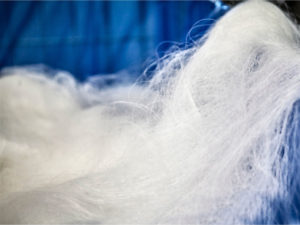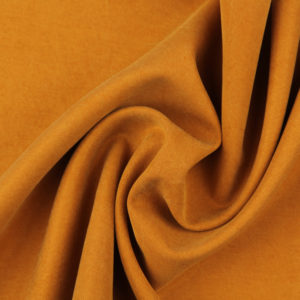Discover new responsible materials that extend the life of your wardrobe
Did you know that? Today, only 1% of textile parts placed on the French market come from recycling. Cotton, leather and many other materials require large amounts of water and resources…Yet alternatives exist and are emerging daily.
Materials created ? Reworked ? Diverted? Anything is possible! While E2R has made the decision to divert the use of automotive fabrics to make eco-trendy bags and accessories (yes, we have just invented this one), hundreds of new materials appear every day!
But what are they?
Organic cotton, linen, jute are materials that you probably already know. But what about the rest… We reassure you, we didn’t know much about them before writing this article !
We hope it will also enlighten you on the subject!
Natural and reworked materials

Hemp is a plant that grows very quickly and on different soils. France is the leader in the production of this plant. Organic hemp is used to make hypo-allergenic and durable clothing that does not deform.
It absorbs humidity and insulates from outside temperatures. It is the most ecological natural material in responsible ethical fashion and in the world of textiles.
TENCEL™ Lyocell
TENCEL™ Lyocell is the holy grail of fibers for fabrics. Made by Austrian company Lenzing, TENCEL™ Lyocell is a regenerated cellulose fiber with properties almost identical to cotton. It’s part of the Rayon family, made from renewable wood materials.
TENCEL™ is manufactured from Eucalyptus trees, which grow fast and thick on low-grade land. It takes just half an acre to grow enough trees for one ton of TENCEL™ fiber. Cotton needs at least five times as much land—plus, it must be good quality farmland. TENCEL™ production is done without the use of pesticides or insecticides (unlike its dirty cousin, cotton).
While Eucalyptus trees don’t need irrigation, water is still used to process the pulp and turn it into TENCEL™ fiber. Lenzing estimates its water use at 155 gallons per pound of fiber, which is 80% less than cotton.
Source : www.thereformation.com
L’Econyl
L’Econyl is Econyl is a 100% recycled and recyclable nylon fiber, made from plastic waste collected in waste disposal centers and oceans (fishing nets, bottles…). They are crushed, melted, transformed into a new fiber, to give a new garment. Econyl® is a registered trademark of Aquafil.
Econyl® is therefore found in the same garments as nylon, for which alternatives in natural materials are still rare: bathing suits, sportswear, carpets… It has the same technical properties: elasticity and resistance.scraps.
Eco-innovative materials
THE NEWLIFE™
THE NEWLIFE™: A polyester yarn processed and spun in Italy from 100% recycled plastic bottles!
Treated using mechanical rather than chemical means, this new fabric requires 94% less water and 60% less energy, while producing 32% less carbon emissions than virgin polyester. Here is a beautiful trench by Max Mara made with this eco-friendly fabrics.

THE Q-NOVA® :
THE Q-NOVA® is a textile fibre made from a minimum of 50% recycled nylon, also known as polyamide 6-6. It is a registered trademark of the Italian company Fulgor, which recovers nylon scraps directly from its production site in Italy and recycles them instead of throwing them away.
Q-NOVA® fibre is considered an eco-responsible and resistant material, and is used by responsible lingerie and tights brands in particular.
Nylon is a synthetic chemical material that is polluting because it is derived from oil. Indeed, the production of virgin nylon is very energy and water consuming. It is responsible for air pollution, but also for marine eco-systems, in particular because of the plastic micro-particles that detach from nylon clothes when they are washed in the washing machine. Recycled nylon in the form of Q-NOVA® is eco-responsible, as it limits the negative environmental impact of virgin nylon and reduces our dependence on petro-sourced materials.
The manufacturing process for Q-NOVA® fibre is purely mechanical, requiring no chemicals.
1kg of Q-NOVA® saves 25 litres of oil and 159 litres of water compared to virgin nylon or polyamide*.
Q-NOVA® saves up to 80% of CO2 emissions compared to virgin nylon or polyamide*.
Q-NOVA® fibre is certified by several reliable labels of responsible fashion: Global Recycled Standard (GRS), the European Ecolabel, and Oeko Tex 100.
Source : www.wedressfair.fr

The vegan materials
Pineapple leather

Pineapple leather is made from the fibres extracted from the leaves of pineapples, it is possible to recreate through industrial processing a material close to leather. It even has a name: Piñatex. It is therefore completely ecological, biodegradable and inexpensive. Many brands such as Puma have already adopted it to make bags or sneakers
There are also grape and mushroom leathers.
Their virtues are respectively a smooth and resistant leather as well as a water-repellent and breathable asset. These materials are durable because they absorb moisture and do not require any chemical products for their treatment. While grape leather is used by furniture and automobile manufacturers, Muskin (mushroom leather) can be used to make shoe soles, belts and handbags. A new alternative for Entre 2 Rétros?

Fish leather
Fish leather: Instead of throwing them away, fish skins can be turned into leather. Proof that it is possible to give a second life to waste from the food industry.
After being treated, tanned, dyed and dried, the scales of a salmon, sturgeon or eel become perfect alternatives to exotic skins thanks to a rendering close to crocodile or lizard. A supple and resistant material that is intended to be fairly high-end and will be used mainly in leather goods.

Do you want to know more?
We invite you to have a look at Reformation, which tells you all about tomorrow’s green and responsible materials!
What’s more, their e-shop is top-notch and gives you a vision of sustainable, innovative, fashionable and avant-garde fashion!

